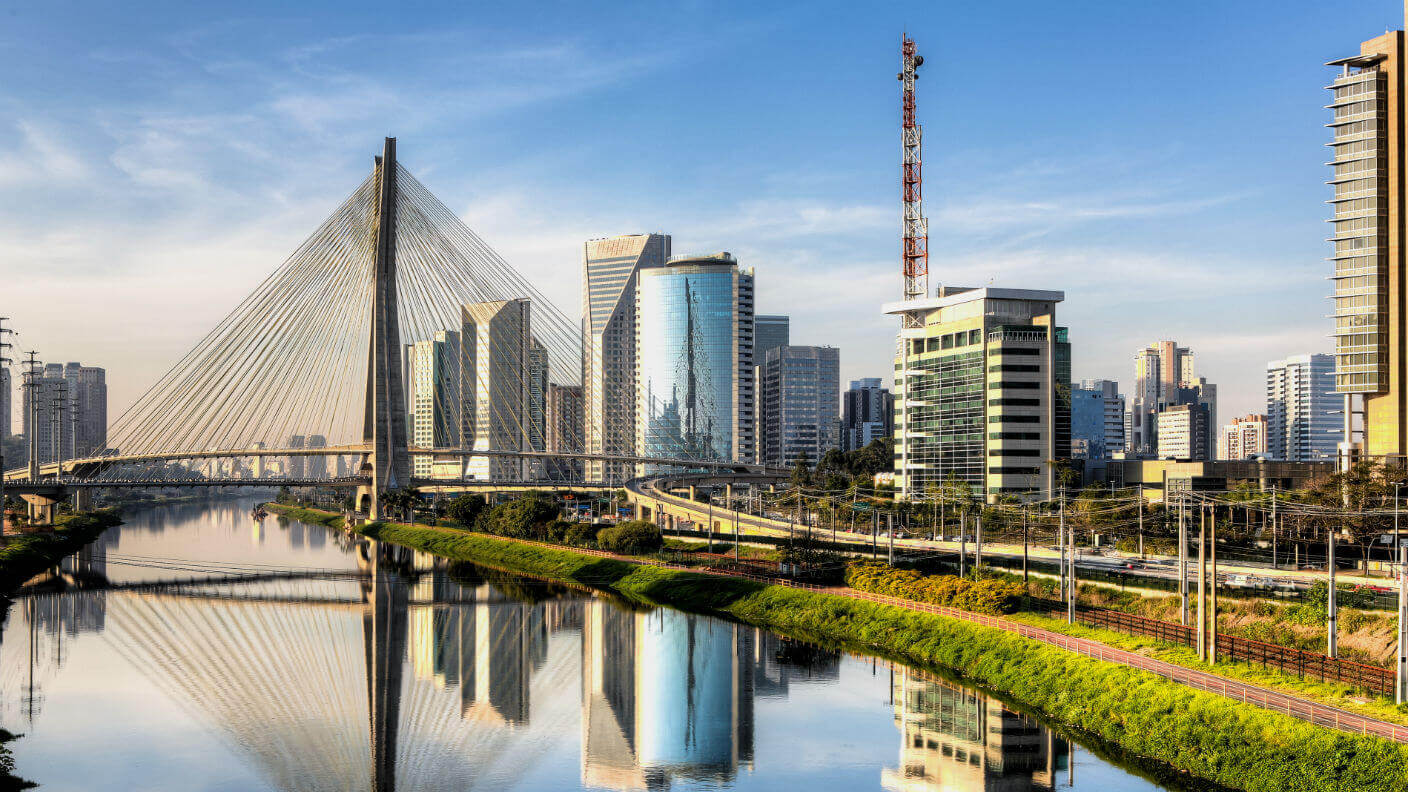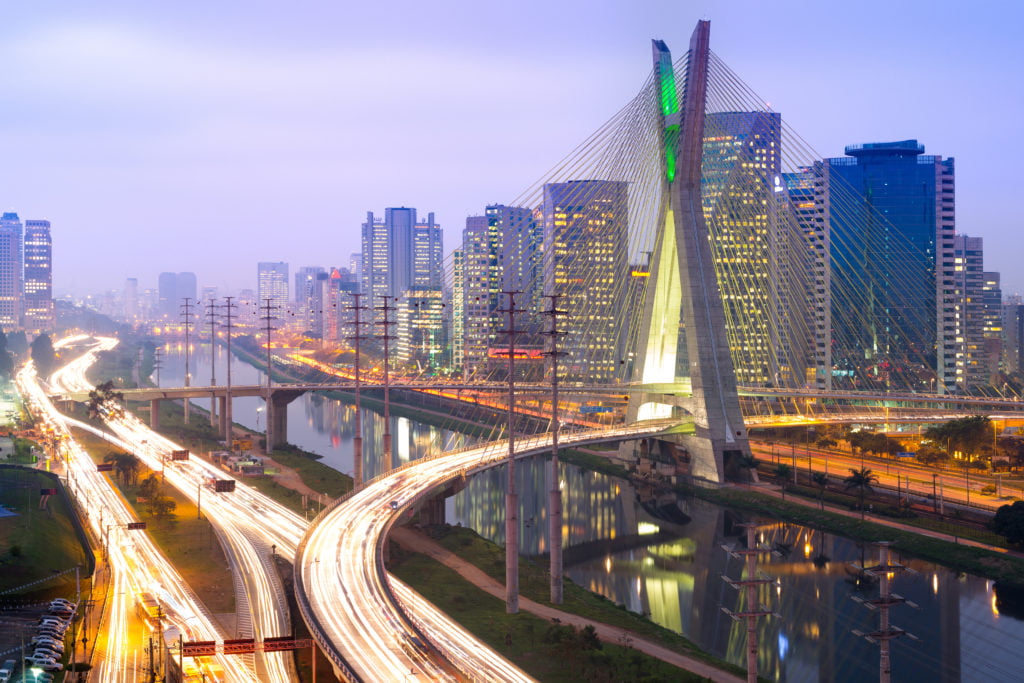Sao Paulo

Sao Paulo, Brazil’s largest city and economic powerhouse, is a vibrant metropolis brimming with history, culture, and a diverse population. From its humble beginnings as a small village in the 16th century to its modern-day status as a global financial hub, Sao Paulo’s journey is one of remarkable growth and transformation.
Sao Paulo’s History and Development
Sao Paulo’s history is intricately woven with the story of Brazil itself. Founded in 1554 by Portuguese Jesuit priests, the city initially served as a missionary outpost. However, its strategic location and fertile land soon attracted settlers, leading to the establishment of coffee plantations that fueled the city’s rapid growth in the 19th century. This era saw Sao Paulo become the center of Brazil’s coffee industry, attracting a diverse population of immigrants from Europe, Asia, and the Middle East, contributing to the city’s cultural richness.
In the 20th century, Sao Paulo experienced an industrial boom, transforming into a major manufacturing center and solidifying its position as the economic engine of Brazil. This period also witnessed the rise of modern architecture, with iconic skyscrapers like the Martinelli Building and the Copan Building shaping the city’s skyline. Today, Sao Paulo is a global hub for finance, technology, and commerce, boasting a thriving entrepreneurial ecosystem and a diverse economy.
Sao Paulo’s Cultural and Artistic Landscape
Sao Paulo is renowned for its vibrant cultural and artistic scene, showcasing a diverse array of museums, theaters, and music venues. The city is home to several world-class museums, including:
- The Museu de Arte de São Paulo Assis Chateaubriand (MASP), a renowned museum featuring a vast collection of Western art, from medieval to contemporary periods.
- The Museu do Ipiranga, a historical museum that tells the story of Brazil’s independence and features artifacts from the country’s colonial past.
- The Pinacoteca de São Paulo, a museum that houses a significant collection of Brazilian art, spanning from the 19th century to the present day.
Sao Paulo’s theaters offer a diverse range of performances, from classical opera to contemporary dance and experimental theater. Some notable theaters include:
- The Teatro Municipal de São Paulo, a grand opera house that hosts renowned opera and ballet performances.
- The Teatro Alfa, a modern theater known for its innovative productions and diverse programming.
- The Centro Cultural Banco do Brasil (CCBB), a cultural center that features a variety of performances, exhibitions, and events.
Sao Paulo’s music scene is equally vibrant, with a plethora of venues hosting everything from samba and bossa nova to rock and electronic music. Some popular music venues include:
- The Audio Club, a renowned venue for live music performances, hosting both local and international artists.
- The SESC Pompeia, a cultural center that features a diverse range of music performances, including classical, jazz, and world music.
- The Citibank Hall, a modern concert hall that hosts a variety of musical events, from pop concerts to classical performances.
Sao Paulo Compared to Other Major South American Cities
Sao Paulo is often compared to other major South American cities, such as Buenos Aires and Rio de Janeiro. While each city possesses its unique charm, there are distinct differences that set them apart:
- Sao Paulo is known for its cosmopolitan atmosphere, its towering skyscrapers, and its focus on business and finance. Buenos Aires, on the other hand, is known for its European charm, its elegant architecture, and its vibrant cultural scene. Rio de Janeiro is famous for its stunning beaches, its vibrant nightlife, and its iconic landmarks, such as Christ the Redeemer and Sugarloaf Mountain.
- Sao Paulo is a bustling metropolis with a diverse population, while Buenos Aires is known for its passionate residents and its strong sense of identity. Rio de Janeiro is known for its laid-back atmosphere and its love of music, dance, and celebration.
- Sao Paulo is a major center for business and finance, while Buenos Aires is known for its cultural and artistic scene. Rio de Janeiro is a popular tourist destination, known for its beaches, its nightlife, and its vibrant culture.
Key Attractions, Neighborhoods, and Events in Sao Paulo
| Attractions | Neighborhoods | Events |
|---|---|---|
| MASP (Museu de Arte de São Paulo Assis Chateaubriand) | Jardins: Known for its luxury boutiques, upscale restaurants, and beautiful parks. | Sao Paulo Fashion Week: One of the world’s most important fashion events, showcasing the latest trends from Brazilian designers. |
| Pinacoteca de São Paulo | Vila Madalena: A bohemian neighborhood known for its art galleries, studios, and vibrant nightlife. | Rock in Rio: A massive music festival that attracts top international artists and millions of fans. |
| Museu do Ipiranga | Liberdade: A historic neighborhood with a strong Japanese influence, known for its traditional shops, restaurants, and cultural events. | Festival de Inverno de Campos do Jordão: A winter festival featuring classical music concerts, theater performances, and art exhibitions. |
| Parque Ibirapuera | Pinheiros: A vibrant neighborhood with a mix of residential, commercial, and cultural spaces. | Carnival: A vibrant celebration of music, dance, and costumes, with parades and street parties throughout the city. |
Economic Powerhouse of Brazil

Sao Paulo, the largest city in South America, is not only a cultural and architectural marvel but also a vital economic engine for Brazil and the entire continent. Its robust and diversified economy makes it a major player in global trade and investment, attracting businesses and entrepreneurs from across the world.
Key Industries and Businesses
Sao Paulo’s economic prowess is driven by a diverse range of industries, making it a hub for both traditional and modern economic activities.
- Finance and Banking: As the financial capital of Brazil, Sao Paulo is home to the headquarters of major banks, investment firms, and financial institutions, including Banco do Brasil, Bradesco, and Itaú Unibanco. These institutions play a crucial role in driving the country’s financial markets and supporting economic growth.
- Manufacturing: Sao Paulo has a long history of manufacturing, with a wide range of industries producing everything from automobiles and electronics to textiles and pharmaceuticals. Some of the prominent companies in this sector include Volkswagen, Fiat, and Nestlé.
- Technology and Innovation: The city has emerged as a major center for technology and innovation, attracting startups, research institutions, and tech giants like Google and Microsoft. The development of a thriving tech ecosystem is creating new opportunities for job creation and economic growth.
- Retail and Services: Sao Paulo is a major consumer market, with a vibrant retail sector and a wide range of services. The city’s shopping malls, restaurants, and entertainment venues attract millions of visitors each year, contributing significantly to the local economy.
- Agriculture: While not as prominent as other sectors, agriculture remains an important part of Sao Paulo’s economy. The state is a major producer of coffee, sugarcane, and soybeans, contributing to the country’s agricultural output.
A City of Contrasts: Sao Paulo Brazil

Sao Paulo is a city of striking contrasts, a vibrant tapestry woven from diverse ethnicities, cultures, and socioeconomic backgrounds. It is a metropolis that embodies both the dynamism and the challenges of modern Brazil, a city where towering skyscrapers stand alongside sprawling favelas, where luxury boutiques rub shoulders with bustling street markets, and where the spirit of innovation coexists with deeply rooted social inequalities.
Ethnic Diversity and Cultural Fusion
Sao Paulo’s rich cultural landscape is a product of its diverse population. The city has been a magnet for immigrants for centuries, attracting people from across Brazil and around the world. This influx of people from different backgrounds has resulted in a unique blend of cultures, traditions, and languages.
- Italian influence: The city has a large Italian community, evident in its cuisine, architecture, and cultural events. The famous “Bairro da Liberdade” is a vibrant neighborhood with strong Italian heritage.
- Japanese legacy: Sao Paulo has the largest Japanese community outside Japan, with a distinct “Little Tokyo” district. Japanese culture is deeply ingrained in the city, evident in its cuisine, festivals, and businesses.
- African heritage: Sao Paulo’s African heritage is significant, with communities that have preserved their traditions and cultural expressions. The city’s vibrant Afro-Brazilian music scene is a testament to this heritage.
- Indigenous influence: While less visible, the indigenous heritage of Sao Paulo remains present in its language, folklore, and certain traditions. The city’s name itself, “Sao Paulo,” originates from the indigenous language Tupi.
This cultural melting pot has contributed to Sao Paulo’s dynamic art scene, vibrant nightlife, and diverse culinary offerings. It has also led to the development of unique traditions and festivals, such as the “Festa Junina,” a celebration of Brazilian folk culture.
Urban Development and Inequality, Sao paulo brazil
Despite its dynamism and cultural richness, Sao Paulo faces significant challenges related to urban development and inequality. The rapid growth of the city, fueled by migration and economic expansion, has resulted in uneven development and social disparities.
- Housing disparity: Sao Paulo is home to both luxurious high-rise apartments and sprawling favelas, starkly contrasting living conditions. The city’s rapid growth has outpaced the development of affordable housing, leading to overcrowding and inadequate living conditions for many.
- Income inequality: Sao Paulo is one of the most unequal cities in the world, with a significant gap between the wealthy elite and the working class. This inequality is reflected in access to education, healthcare, and other essential services.
- Urban sprawl: Sao Paulo’s sprawling urban landscape, with its extensive network of highways and sprawling suburbs, has led to environmental challenges, including air pollution, traffic congestion, and the loss of green spaces.
These challenges have a profound impact on the lives of many residents, creating social tensions and highlighting the need for sustainable and equitable urban development.
Innovative Solutions and Initiatives
Despite the challenges, Sao Paulo is a city that is constantly evolving and adapting. There are numerous innovative solutions and initiatives aimed at addressing the city’s urban development and inequality issues.
- Urban renewal projects: The city government has implemented urban renewal projects to improve living conditions in favelas, providing access to basic services and infrastructure. These projects aim to improve housing, sanitation, and access to healthcare and education.
- Sustainable transportation: Sao Paulo is investing in public transportation, promoting cycling, and encouraging the use of electric vehicles to reduce traffic congestion and air pollution. The city’s extensive bus network and subway system are crucial for efficient and sustainable mobility.
- Social inclusion programs: The city government has implemented social inclusion programs aimed at providing access to education, healthcare, and job training for marginalized communities. These programs aim to empower individuals and communities to overcome poverty and inequality.
These initiatives are a testament to Sao Paulo’s commitment to building a more inclusive and sustainable city, where opportunities are available to all residents.
Sao paulo brazil – São Paulo, Brazil, a bustling metropolis, is a hub of activity, both on the ground and in the air. Connecting this vibrant city to other destinations across the country and beyond are numerous flight routes, such as flight 2283 brazil , which exemplifies the interconnectedness of São Paulo with the wider world.
These flights contribute significantly to the city’s economic growth and cultural exchange, solidifying São Paulo’s position as a major global center.
São Paulo, Brazil, a bustling metropolis known for its vibrant culture and economic prowess, is also a microcosm of the broader political landscape. As the nation prepares for its upcoming presidential election, the question of “who’s winning in the presidential debate” whos winning in the presidential debate becomes increasingly relevant in São Paulo, where the outcome will have a direct impact on the city’s future development and social welfare.
